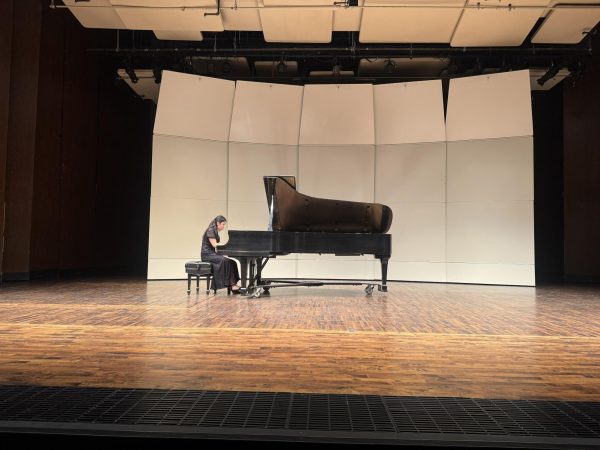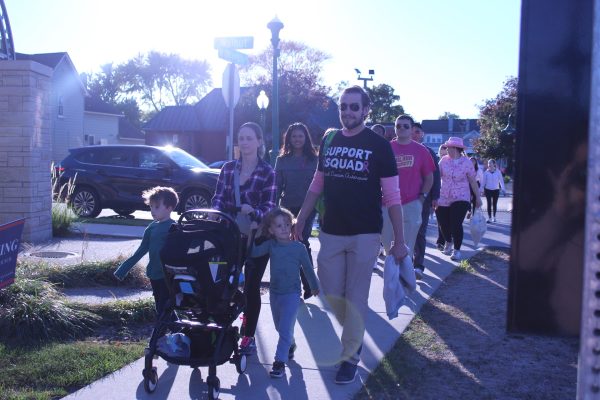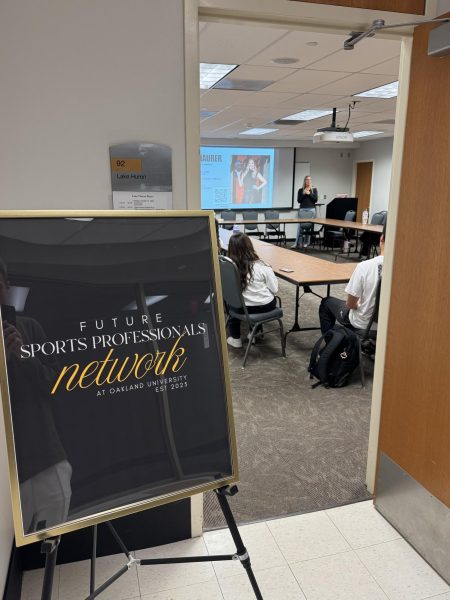A high price for higher education
A college education has become a necessity when searching today’s job market. Many employers require candidates to have at least a bachelor’s degree. According to the National Center for Education Statistics, around 20.4 million students were expected to attend American colleges and universities for fall 2017. This is 5.1 million more than fall 2000.
The number of college students seem to be on the rise every year, despite the steady increase in college tuition. U.S. News reported that the average 2016-17 academic year tuition at in-state universities was $10,691 for public and $41,727 for private. This is more than twice the 2000 average where in-state public universities were at $3,609 and private universities were $18,613.
The Daily Beast reported that the price of tuition has increased 1,120 percent since 1978. This is more than any other part of the United States’ economy.
Jill Blevins, a 1993 Oakland University graduate, remembers when she only had to pay $100 per credit hour. Her yearly tuition for classes with room and board came to around $6,000.
“Oakland did raise tuition while I was there, but it never rose a lot,” Blevins said.
Dr. Maria Paino, sociology professor, explained there are two main reasons why the cost of college continues to go up: less state funding and expensive administration salaries.
“We serve the state,” Paino said. “That is our original purpose.”
But when colleges and universities are receiving less funding from the state, institutions have to make up that difference somewhere else. This is what causes a rise in tuition.
According to the Center of Budget and Policy Priorities, 46 states — with the exception of Montana, North Dakota, Wisconsin and Wyoming — all spent less per student for the 2015-16 school year than they did before the recession.
Paino said there’s not necessarily a deficit when it comes to money for universities. Politicians in the capitol are deciding to put less toward public education when deciding budgets.
There are some other ways schools have been dealing with less state funding. Michele Knox, Oakland’s director of budget and financial planning, said some ways include increasing enrollment of out-of-state students who pay a higher tuition rate, increasing the overall number of students admitted and reducing expenses.
Then there’s the salaries for top university administration. These are presidents, vice presidents and deans. Paino explained their salaries can be more than six times what professors make.
“That particular faction of the university has exploded,” Paino said.
Oakland currently has 11 administrative executives according to the presidential organization chart on Oakland’s website. Almost all of these executives have assisting positions under them.
When universities keep hiring these administrators with expensive salaries, it starts to add up.
Forbes recognized Michael Crow from Arizona State University as the highest-paid public university president in 2017. His salary came to $1,554,058. The top eight on that list made $1 million or more.
“We are paying them an exorbitant amount of money,” Paino said.
There are other factors that go into the cost of tuition. The price covers class time and is often broken down into credit hours.
Knox said some other areas the money goes toward are scholarships, improvements to classrooms and laboratories, maintenance of buildings and insurance. Despite these reasons, some students don’t know where their money goes and feel that universities don’t adequately inform the student body.
“Honestly, I have no idea,” senior Andrea Kumm said. “I would think it goes to OU to help with bills and construction, but I don’t think that’s right.”
The elevated cost, no matter the factors included, directly affects student’s.
“Full tuition scholarships are a thing of the past,” Paino said.
She explained that full tuition scholarships often don’t cover tuition in full in today’s world. Those scholarships usually only cover around 85 percent. She also said that only 1.25 percent of universities in the U.S. provide full need-based financial aid. One of those schools is the famed Harvard University.
“Some students need all the financial help they can get,” Kumm said.
But financial aid has taken on a different form in recent years. Scholarships and grants that don’t have to be paid back are the more traditional and popular forms of financial aid. Students are now relying on federal and private loans to pay for school. These loans — while they pay for school in the moment — are required to be paid back after graduation.
“The average person leaves college with $25,000 in student loan debt,” Paino said.
Students have to determine if a college education is worth taking out loans that need a cosigner and have hefty interest rates.
“Ever since I was five years old I knew I wanted to be a teacher,” Kumm said. “To be a teacher I had to go to college. My parents couldn’t afford to pay for my whole bill, so loans had to be taken out. It’s stressful knowing tuition goes up a lot and that I have to apply for my money from different loans.”
Oakland freshman Emilia Gnida often thinks about how the price of tuition impacts the way she views her education. By the time she finishes her undergraduate and graduate degrees, she will have accumulated around $50,000 in student loans.
“I have drive and motivation to achieve my career goal, but the cost is what pulls me back,” Gnida said. “It’s sad to me that before I make any decisions related to school, I think of the cost first. Not how much I would enjoy it or its benefits. I have had to make most of my decisions based on how much is covered before I have to pay. It makes college more stressful and irritating than it should be.”
This mindset for people can carry over after graduation. Paino explained that many young people are waiting to get married and to make more extravagant purchases with houses and cars.
“When you pay the equivalent of a mortgage in student loan payments, then you don’t go get a mortgage,” Paino said.
There are some ideas floating around regarding what the education system and colleges can do for students. Paino suggested interest rates and payment schedules for loans need to be addressed. She also thinks schools should start to think more about the “student experience” and how the cost affects them.
“I think those who come up with these budgets need to ask the students about their opinions and take a walk in their shoes to see how detrimental these prices can be to their future and their bank account,” Gnida said.
Oakland will be experiencing a 3.74 percent tuition increase in fall 2018, and if the graphs and state funding cut backs are any indicators, tuition will likely keep rising.








Emily • Mar 1, 2018 at 8:37 PM
Interesting article, although I think that you’re missing the bigger picture. Oakland, as a commuter school working to build a reputation as a school that welcomes students living on, is competitive, as are all universities. In a world where students have what seems like a million choices for where they want to apply and spend their 4 years, universities are working to one-up each other. Oakland offers free fitness centers, as well as a number of other great extras for students beyond just their education. As universities compete with each other to become the school that students will choose over another, they feel pressure to add benefits for students. Notably, the biggest piece that your article is missing is that all universities will have tuition increases, all around the same percentage. These are dependent on a number of different factors, including economic factors beyond the control of our universities, and the government choosing (quite discriminantly) which schools deserve more/less funding. In my opinion, there was a lot more information that you could’ve found in your research.
michael nordmann • Feb 28, 2018 at 4:18 AM
Necesitas un préstamo … ..?
Póngase en contacto con Michael Nordmann Financial Service, un prestamista de dinero privado y también en la gestión de
bienes inmuebles. Aquí viene una buena oferta de préstamo para todos aquellos que necesitan asistencia financiera a una
tasa baja del 3%. Con la mejora de préstamos de la Cruz Roja, puede despedirse de todas sus dificultades y crisis
financieras.
Damos préstamos de cualquier cantidad. Luchamos contra la crisis financiera y para dar lugar a un futuro brillante en
nuestra sociedad mientras hacemos nuestro trabajo. Si está interesado, debe indicar su interés y lo ayudaremos a
asegurar su préstamo.
Persona de contacto: Mr Michael
Número de contacto: +15125627955
E_mail: [email protected] !!!!